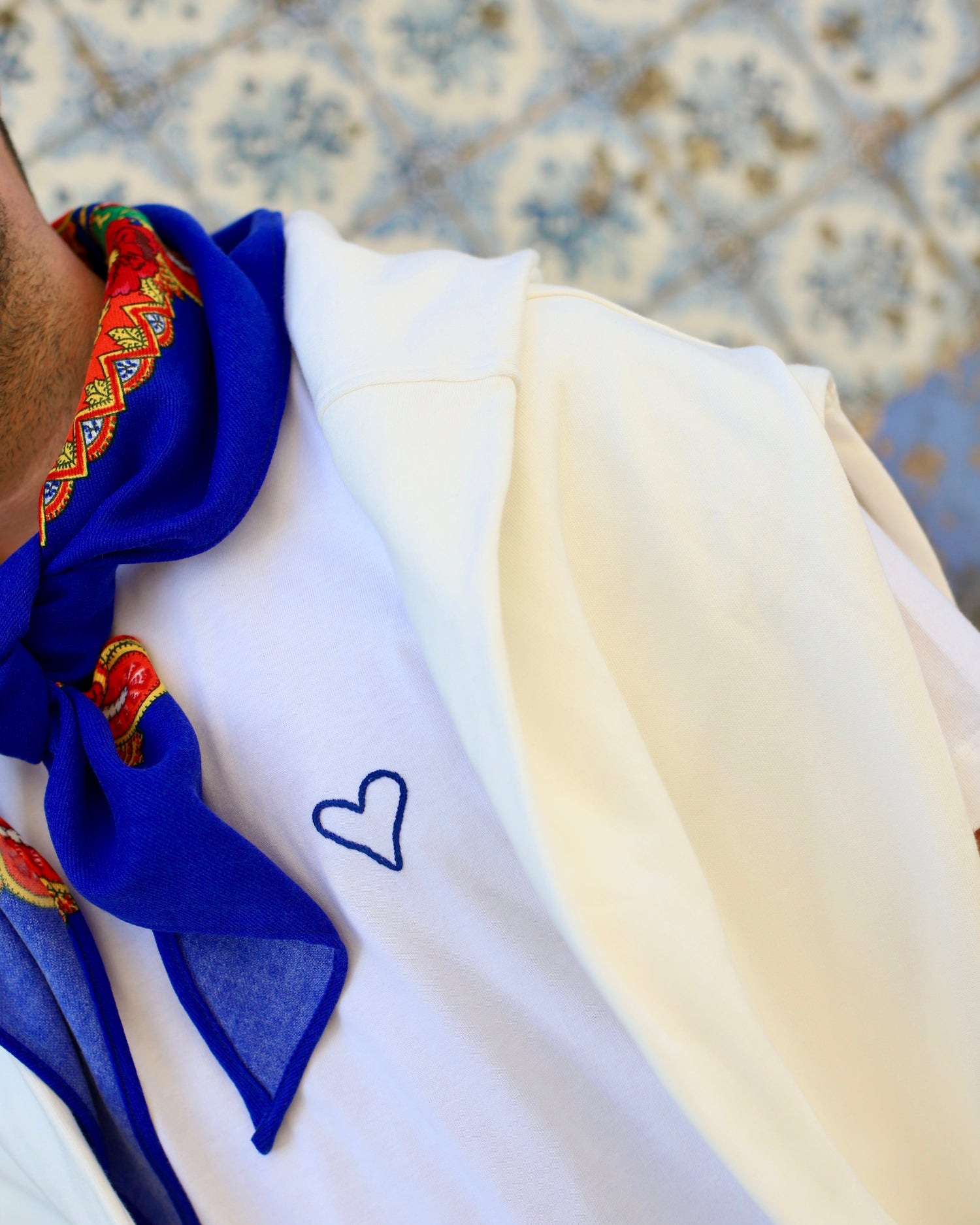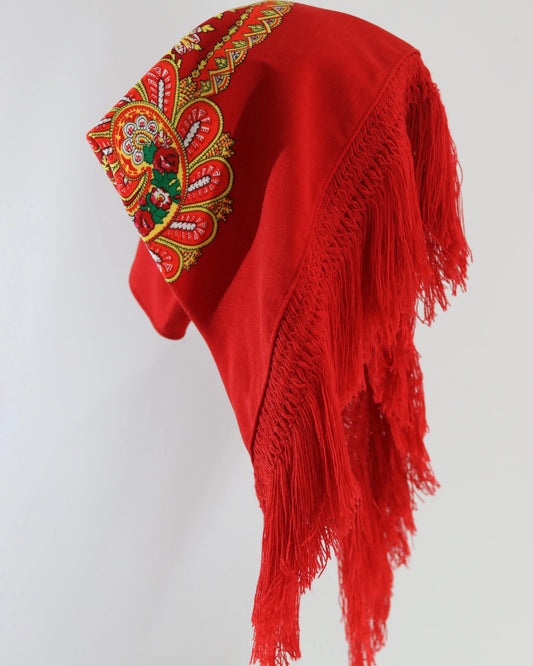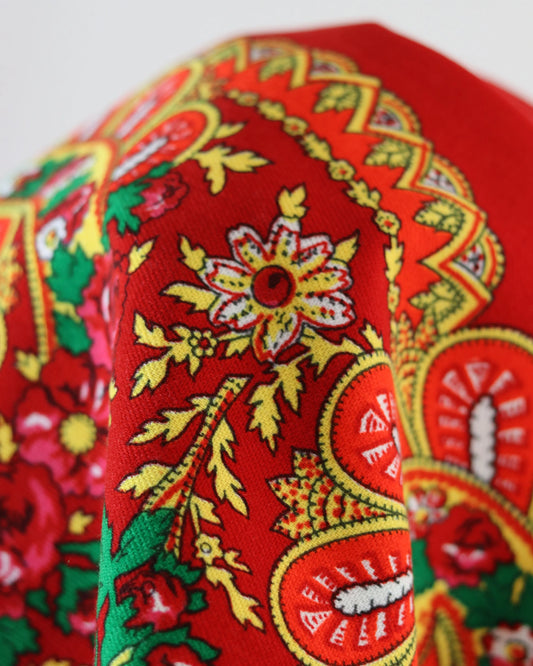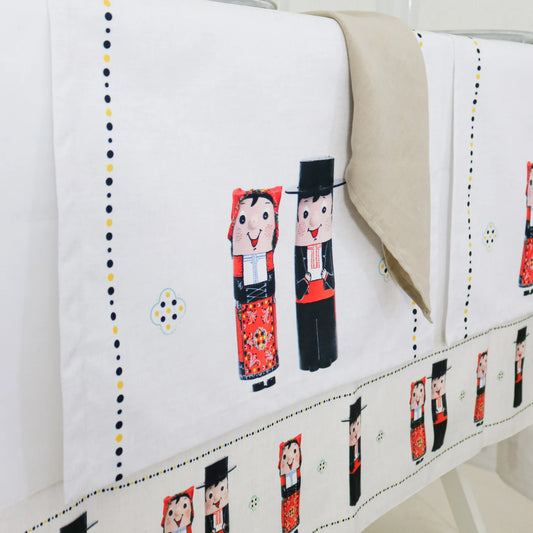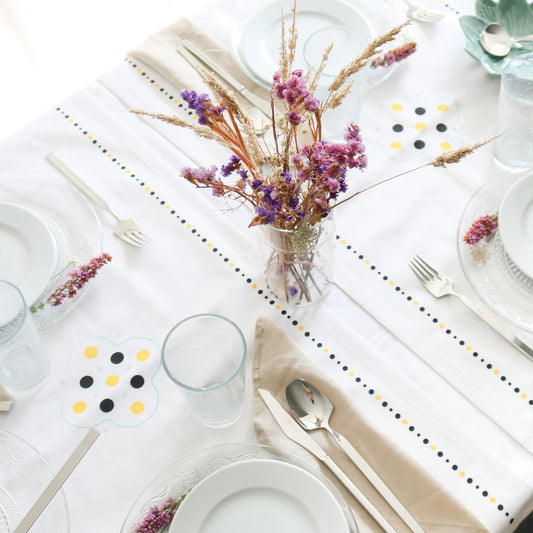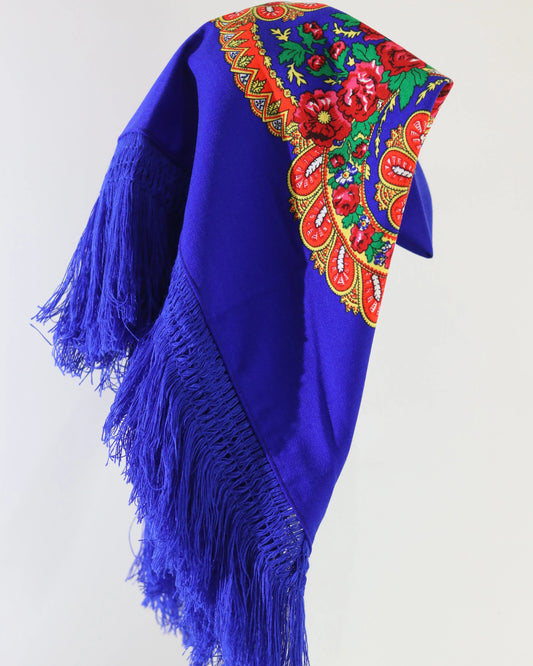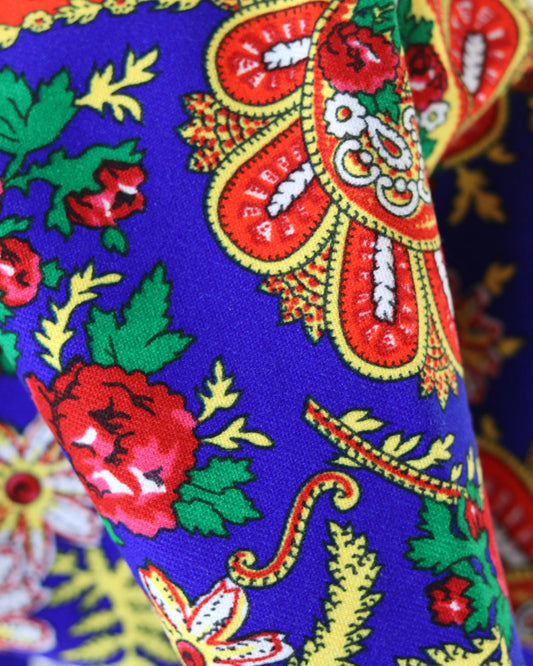The future of the pilgrimage of agony in Viana
August brings Viana do Castelo a unique pulse. The scent of the sea mingles with the sound of bass drums, gold gleams in the sun, and devotion permeates streets where families meet, pray, dance, and talk for hours. The Romaria d'Agonia remains one of the country's greatest moments, a stage where local identity is showcased with confidence and joy. Discussing its future means treating tradition with respect while simultaneously paving the way for it to remain alive, vibrant, and relevant.
What remains
Before considering new developments, it's worth recognizing the roots of the festival. The devotion to Our Lady of Agony, the procession to the sea and land, the costumes of stewardesses and farmhands, the glitter of gold that spans generations, the ethnographic procession, the giants and big-headed people, the ruckus that sweeps through entire neighborhoods. All of this isn't just scenery; it's community life.
The pilgrimage's strength stems from a spiral of participation: the parish, the brotherhoods, the cultural associations, the groups, the bands, the merchants, the master craftsmen. Each person contributes a gesture, and together they build a common work.
The base doesn't require replacements. It requires care.
Pressures that are already being felt
Success has side effects. Those who experience the pilgrimage from within know that there are tensions to be managed:
- Visitors in sensitive areas, impacting historic flooring and street carpets
- Pressure on accommodation, with rising prices and displacement of residents
- Aging artisans and seamstresses without sufficient apprentices
- Heavy logistics with waste and noise, affecting the well-being of those who work and those who pray
- Risk of simplifying intangible heritage, reducing it to postcard images
Ignoring these signs would be a waste of time. The right time to take charge of the future is now.
Growing with measure
Quality and proportion can go hand in hand. A well-managed pilgrimage gains depth and leaves a lasting impression on those who participate.
Some short-term lines of action:
- Flow management with peripheral parking pockets and frequent transfers
- Shaded rest areas with benches and free drinking water
- Staggered scheduling to avoid peaks, with strong activities in the days before and after the peak
- Symbolic ticketing for audience sectors at high-attraction events, ensuring safety and comfort
- Clear communication of schedules, routes and capacity in real time
Measure doesn't mean cutting off the soul. It means providing the conditions for the soul to feel.
Technology with a purpose
Technology only makes sense when it serves people and content. In Viana, it can make a difference without invading.
- Official mobile app with offline maps, safety alerts, queues, accessibility, and historical context
- Discreet QR codes at points along the route, linking to short videos about costumes, embroidery, goldsmithing, and the origin of the floats
- Live broadcasts with careful storytelling and translation into Portuguese Sign Language, allowing participation from the diaspora and people with reduced mobility
- Collaborative digital archive for collecting old photographs, player audio, embroidery patterns, and family stories
The objective is simple: to create bridges between those who know and those who want to learn, without turning the city into a canvas.
Sustainability that can be seen
The party leaves a mark. You can lighten it up.
- Reusable cups with deposit and washing points distributed
- LED lighting and low-emission generators, with public monitoring of energy consumption
- Recyclable or biodegradable materials in the stalls, with incentive policies for those who comply
- Selective collection circuits visible to the public, with identified support teams
- Noise roadmap with limits by zone and times defined in dialogue with residents
The topic of fireworks deserves reflection. There's a legion of people waiting for this moment of light. There are alternatives and possible combinations.
| Option | Sound impact | Estimated emissions | Relative cost | Likely public perception | Operational risk |
|---|---|---|---|---|---|
| Traditional pyrotechnics | High | Medium to high | Average | Very positive | Average |
| Low noise pyrotechnics | Average | Average | Medium to high | Positive | Average |
| Drones with light and lasers | Low | Low | High | Split at the beginning | High in wind |
It's not about putting out the fire, but about testing hybrid formats that respect noise-sensitive people, animals, and the riverine ecosystem itself.
The art that dresses Viana
Costumes aren't fantasy; they're heritage. The lines, the stitches, the cut of the vests, the density of the scarf, the weight of the gold passed from grandmother to granddaughter. Viana's creative economy thrives on this knowledge.
Ensuring continuity requires:
- Scholarship-supported apprenticeship programs connecting teachers with young people throughout the year
- Filigree and embroidery laboratories with certification of origin and quality assurance
- Public procurement for municipal and museum collections that remunerates actual working hours
- Curated digital marketplace selling pieces with history and traceability
Fashion can engage with clothing without diluting it. Collaborations between designers and artisans, always identified and contextualized, can renew interest and generate income for those who produce.
Education and transmission between generations
The pilgrimage wins when it meets the school calendar.
- Workshops in schools in Viana and Alto Minho on music, dance, cutting and embroidery
- Master craftsmen's residences in cultural centers with free access for young people
- Summer programs for the diaspora, bringing together children and grandchildren of emigrants
- Pedagogical guides for teachers, with content aligned with History and Art Education programs
Harvesting tomorrow requires sowing today.
Openness without losing the soul
The risk of folklorization exists when you start showing what you think others want to see, rather than what the community feels is theirs. There are simple tools to avoid this bias.
- Pilgrimage curatorial board with representatives from parishes, ranches, artisans, academics and residents
- Charter of principles for costumes, repertoires and formats, maintaining room for situated creation
- Systematic audiovisual recording for future memory, with context notes and authorship
- Contemporary programming spaces that engage with the festival without imitating it
Opening doors is healthy. Keeping keys to your senses is healthy too.
Governance, financing and transparency
Professional management doesn't negate community spirit. It helps nurture it.
- Coordination structure with clear mandate, rotation and public accountability
- Financial plan with diversified sources: city hall, patronage, responsible sponsorships, moderate own revenues
- Sponsorship criteria that exclude intrusive advertising and brands that are not aligned with local values
- Annual report with cultural, social, environmental and economic indicators
Transparency builds trust. With trust, participation grows.
The city in pilgrimage mode
Temporary urbanism is part of art.
- Signage consistent with the aesthetics of the party and easy to read
- Protected floors in high-pressure areas with discreet materials
- Water points, shaded areas, accessible restrooms, and visible reception teams
- Wheelchair and stroller accessible routes, with clear advance information
- Coordination with CP to reinforce schedules, integrated tickets with local transport and timely communication
Small things make a big difference to the body of someone who spends the entire city celebrating.
Responsible tourism that respects the home
The pilgrimage is, first and foremost, for the people of Viana. Visitors are welcome as long as they respect the locals.
- Visitor code with simple rules: noise, waste, rest for residents, respect for places of worship
- Accommodation supply prepared with limits on short-term rentals in critical areas, protecting neighborhood life
- Careful and honest multilingual information, without exaggeration
- Alternative routes through the region to distribute economic flows and benefits
Viana has a lot to offer. The secret is not to exhaust its charm.
Extended calendar, continuous pulsar
The energy of the pilgrimage can radiate throughout the year.
- A series of talks and concerts in less stressful months, featuring sound archives and life stories
- Temporary exhibitions on costumes and goldsmithing, with rare pieces and work processes
- Artistic residencies that create works based on intangible heritage without caricaturing it
- Workshops to prepare for the party: sewing, singing, choreography, decorating floats
The city doesn't have to live only in August. You can maintain a beautiful rumor in all seasons.
Security as a service
Public safety and civil protection benefit if they are seen as care services.
- Clearly communicated evacuation plans and meeting points
- First aid teams at the main traffic hubs
- Early weather warning systems with alternative scheduling plans
- Volunteer training to support lost elderly people and children
The goal is for everyone to feel at home, even in the middle of a crowd.
Climate, sea and weather
The sea is both the image and reality of the pilgrimage. The climate is changing and demands attention.
- Updated procedures for procession to the sea, with real-time risk assessment
- Materials and structures resistant to extreme heat and wind gusts
- Shade spots and fog on very hot days
- Adjusted insurance and teams prepared for plan changes with little notice
Prudent choices today avoid heartbreak tomorrow.
Towards broad recognition
The Romaria d'Agonia already has a clear relevance in the country. Discussing paths to broader recognition may make sense, if it serves the community and not the other way around. Inventories of intangible heritage, cooperation networks with other Atlantic festivals, partnerships with universities and museums.
Any application or seal should begin with simple questions: what is it for, who benefits, and what is compromised. If the answer protects the essentials and adds value to those organizing the event, it's worth it.
Metrics that matter
Measuring is caring, when we measure what matters.
- Number of active artisans and apprentices, training hours and average pay
- Level of satisfaction of residents and merchants, with public surveys
- Estimated environmental footprint and waste diversion rate for recycling
- Geographical distribution of visitors and length of stay
- Accessibility: percentage of accessible routes, sign language stations, easy-to-read content
- Youth participation in groups and rehearsals
Clear reporting fuels better decisions.
Voices that should sit at the same table
A pilgrimage is like an orchestra. To play in tune, those who matter join in.
- Parish and brotherhoods
- City Council and parish councils
- Cultural associations, folk groups, bands
- Schools, IPVC and research centers
- Craftsmen, goldsmiths, seamstresses, embroiderers, show technique companies
- Accommodation and food traders and operators
- Security forces and civil protection
- Migrant community and Viana diaspora
The quality of the conversation determines the quality of the outcome.
Five-year roadmap
A simple plan with clear rhythms helps gain traction.
Year 1
- Create the curatorial board and coordination structure
- Launch the collaborative digital archive and the app with basic features
- Implement reusable cups and reinforce shade and water
Year 2
- Starting apprenticeships in goldsmithing and embroidery
- Testing low-noise pyrotechnics for part of the show
- Establish free seating areas for people with reduced mobility
Year 3
- Expand school workshops and diaspora programs
- Create a curated digital marketplace for certified crafts
- Start annual cycle of talks and exhibitions
Year 4
- Test a hybrid format of light and drones on a specific day, with public evaluation
- Expand transportation network and peripheral parking with integrated ticket
- Publish impact report with comparable indicators
Year 5
- Consolidating the governance and financing model
- Decide, based on public consultation, on applications for heritage networks
- Establish long-term goals for environmental footprint and training new teachers
Images of tomorrow
I see a Viana full of accents, but with the same cadence as always. I see stewardesses proud of their costumes, with stories to tell curious children. I see artisans with light-filled workshops, where gold is crafted with time. I see the serene procession to the sea, with safe boats, and I pray that the sea will always be home. I see light in the sky that respects the ears of those who need silence. I see shorter lines, cooler shadows, and longer smiles.
The pilgrimage isn't just an event. It's a way of being. And when a city takes care of its way of being, it gains a future. Viana knows how to do this. And the Romaria d'Agonia will continue to express who we are, with our feet on the ground and our hearts beating to the beat of the bass drums.



